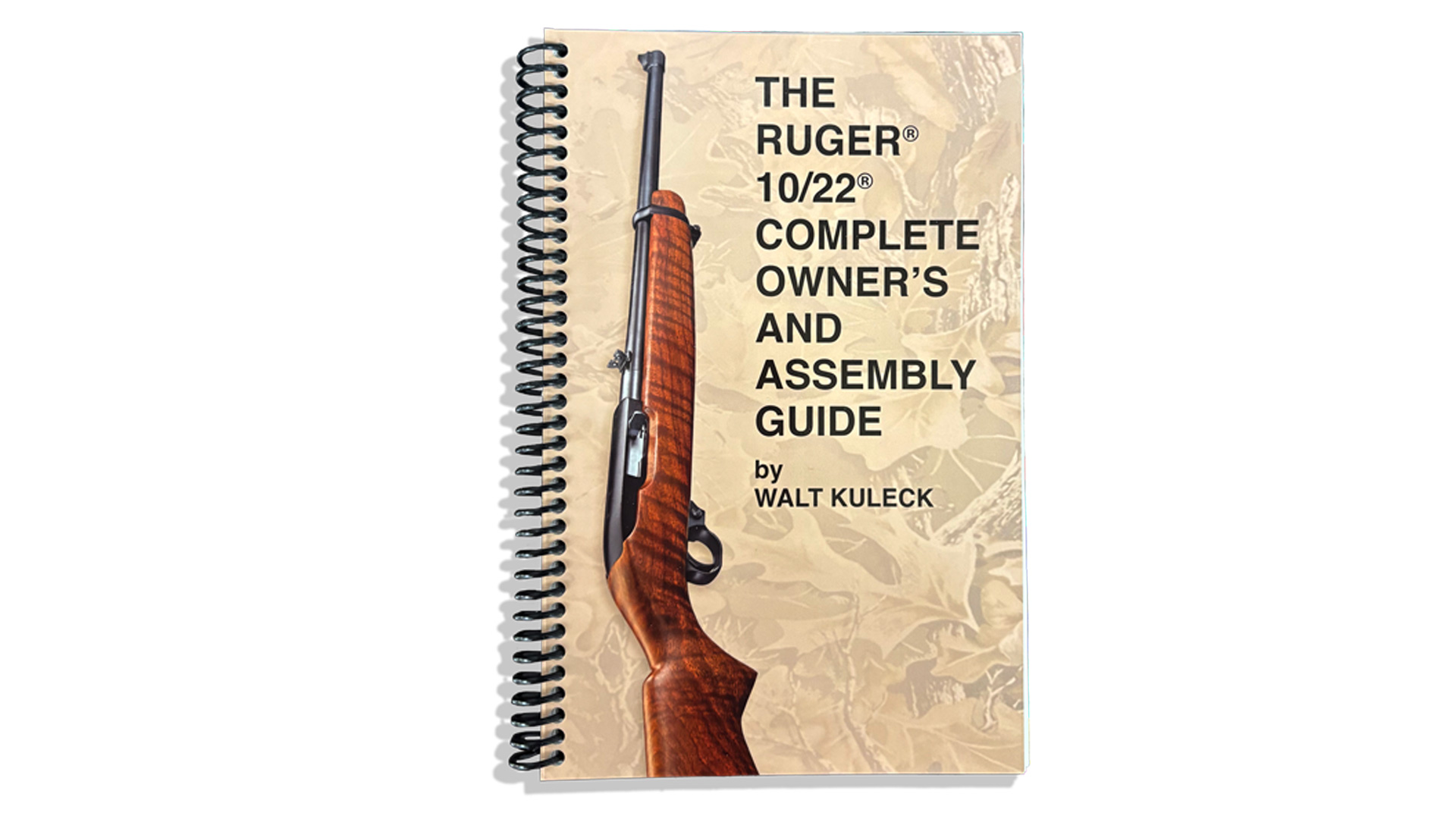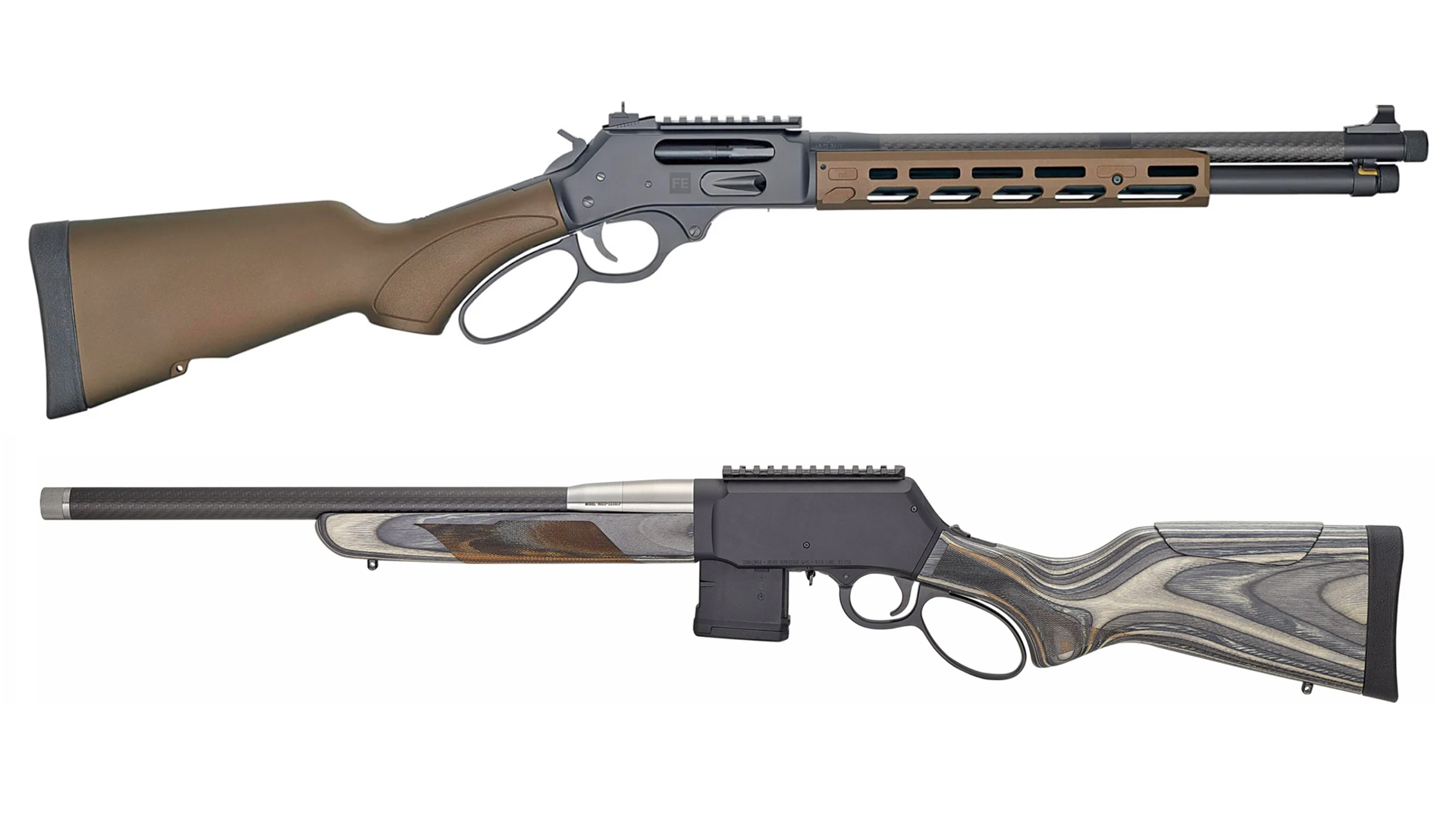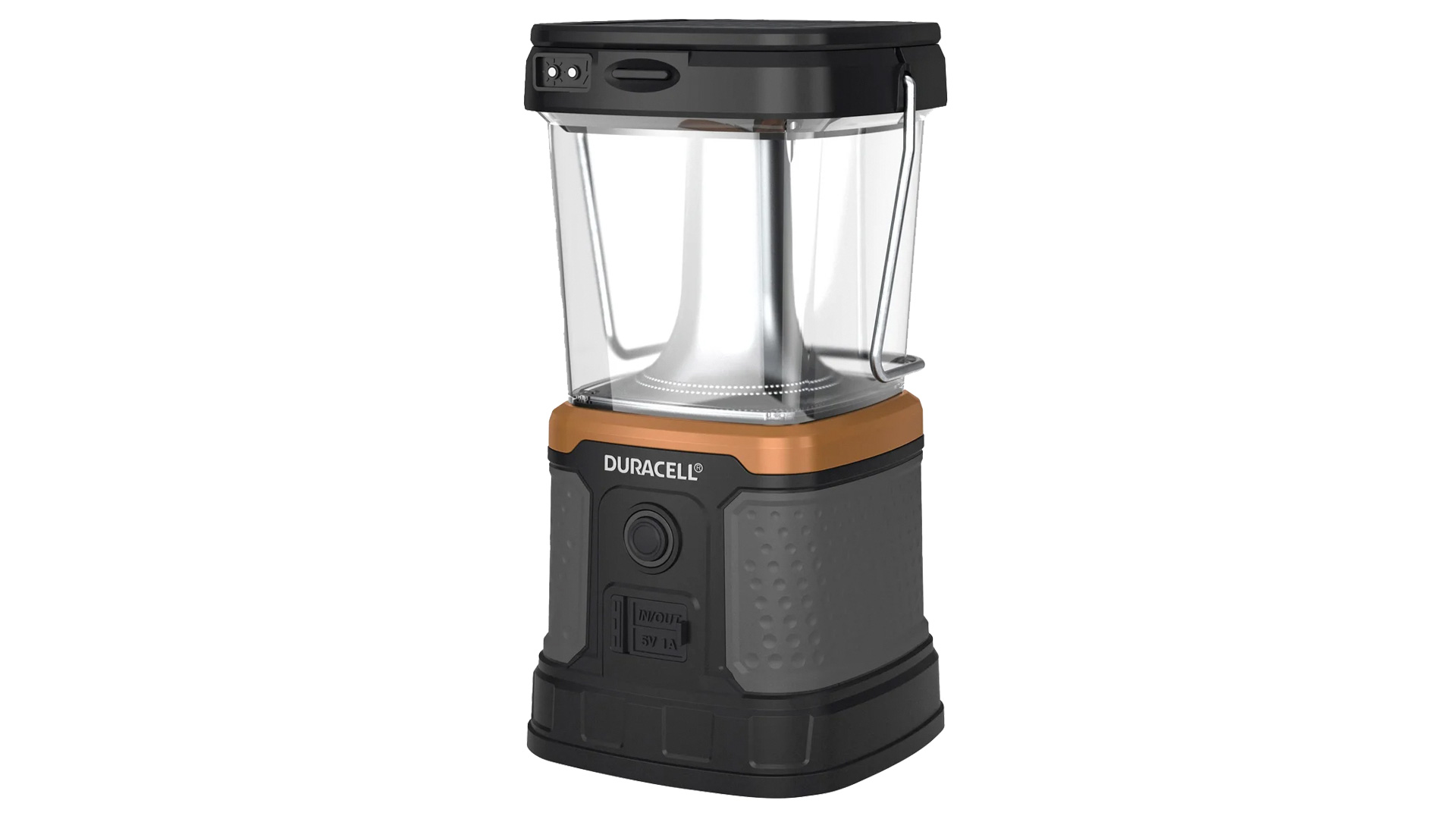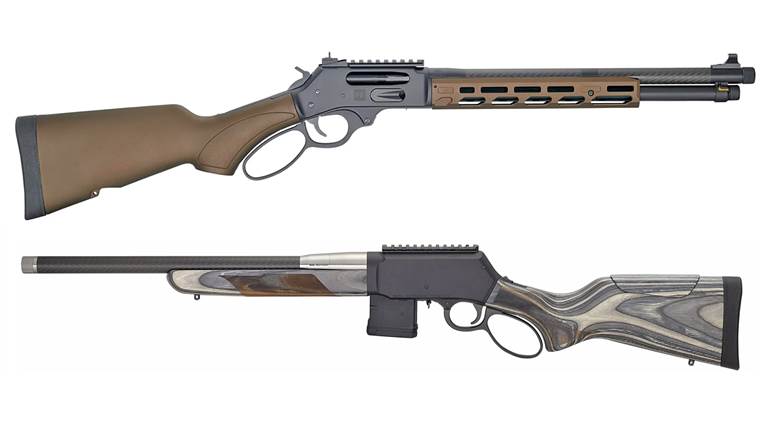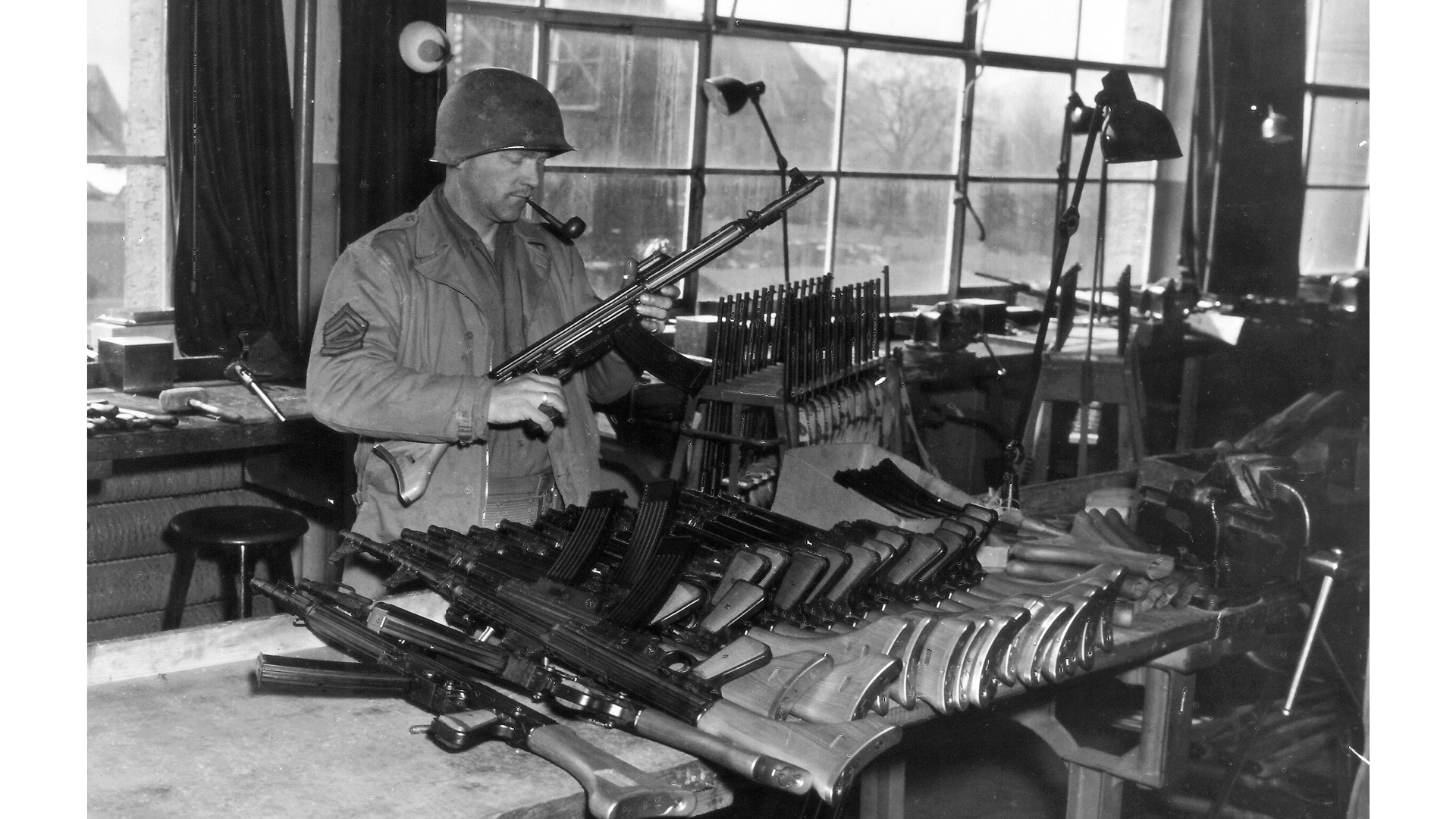
The German Sturmgewehr automatic rifle, otherwise known by its World War II designation of MP43, MP44, or StG44, has been the subject of much debate since its introduction more than 80 years ago. Through the decades, the German World War II firearm innovation has been alternately praised or derided, frequently by folks who have never even held the gun, much less fired it. While I’ve had the opportunity to shoot one, a few rounds expended at the range in peacetime is not quite “primary research” material.
Regardless of what any of us might think of the firearm today, it is important to find out what the soldiers who used it, and particularly those who faced it, captured and reviewed it during the war had to say. Working with the editors at American Rifleman, I compiled as much wartime commentary about the select-fire rifle as I could find. The reactions and assessments are quite revealing, and they provide some insight into why the U.S. Ordnance Dept. chose not to pursue the German intermediate cartridge and did not adopt the StG44-style rifle.
 A popular war trophy: While U.S. Ordnance reviews may not have thought much of the MP43/MP44/StG44, the GIs in western Europe were happy to capture them. Photo courtesy of author’s collection.
A popular war trophy: While U.S. Ordnance reviews may not have thought much of the MP43/MP44/StG44, the GIs in western Europe were happy to capture them. Photo courtesy of author’s collection.
On the other side of the world, the Soviets fully embraced the German 7.92x33 mm Kurz cartridge, turning it into the 7.62x39 mm round. Mikhail Kalashnikov took the new cartridge and created a “machine gun for the soldier,” combining features of the robust M1 Garand rifle’s gas-operated, long-stroke piston design with the compact German StG44 automatic rifle concept. That engineering became the AK-47, and with more than 75 million examples from the AK-47 family of rifles, we can all agree that it was a successful design.
The wartime comments concerning the StG44 (and similar rifles) have been gleaned from U.S. intelligence reports and bulletins, U.S. Ordnance documents, after-action reports from U.S. combat units and U.S. intelligence transcripts of POW interviews. Many of the early intelligence reports are very U.S.-centric in their view of the new German gun.
The big assumption consistently made is that the German MP43 and the U.S. M1 carbine were designed for the same reasons—and they were not. During World War II, intelligence analysts working for the Western Allies normally viewed German firearms as they related to combat only with American and British forces. Overlooked in these assessments are the needs of the German military fighting on the Russian front. The meat-grinding war in the East consumed men and machines at an incredible rate, as German casualties on the Russian front were more than four times that of all other combat areas combined.
 Some GIs took on the StG44 as their personal gun—note the German magazine pouches hanging from this soldier’s belt. Chateau-Salin, France, Nov. 13, 1944. Photo courtesy of National Archives & Records Administration (NARA).
Some GIs took on the StG44 as their personal gun—note the German magazine pouches hanging from this soldier’s belt. Chateau-Salin, France, Nov. 13, 1944. Photo courtesy of National Archives & Records Administration (NARA).
The American M1 carbine was originally intended to replace the pistol and the submachine gun, and the light and pleasant-shooting carbine quickly found its way into U.S. infantry units where it was never meant to be. The M1 carbine was not a replacement for the M1 Garand rifle, and by the late summer of 1944, many of the carbines used by infantrymen were exchanged for Garand rifles in order to regain range and striking power.
On the German side, the MP43/MP44 was an entirely new concept in infantry firepower, intended to ultimately replace (or greatly supplement) the Wehrmacht’s standard Mauser 98K bolt-action rifle. Consequently, comparisons between the M1 carbine and StG44 are dubious at best, while comparisons between the M1 Garand and the Sturmgewehr demonstrate the U.S. Ordnance mindset about battle rifles. That mindset would continue well into the 1950s.
“New Automatic Machine Carbine”
Intelligence Bulletin, September 1944 Issue
The German Army is using a new automatic machine carbine, the M.P. (Maschinen Pistole) 43, which serves the same tactical purpose as the U.S. carbine, M1, caliber .30. Like the U.S. carbine, this German weapon is a gas-operated, locked-breech weapon, and fires ammunition of service caliber which is not interchangeable with any other German small-arms ammunition. The new weapon has a caliber of .31 inches (7.92 mm), is 37 inches long, and weighs 10 pounds without the magazine. With the full magazine (30 rounds), the total weight is 12 pounds.
It consists almost entirely of stamped parts, with the exception, of course, of the action, the barrel, and the wooden stock. This is in accordance with the present trend in German small-arms manufacture. The use of rivets in the trigger mechanism makes detail stripping of this weapon difficult.
The new carbine is reported to have a theoretical cyclic rate of fire of 800 rounds per minute. This rate of fire is not realized in practice, however, because a recent German order forbids troops to use the automatic fire setting, which leads to pronounced overheating of the weapon’s only barrel. In effect, this new carbine is a magazine-fed, semi-automatic weapon.
The M.P. 43 therefore compares very unfavorably with the U.S. carbine, M1. The German weapon is practically twice as heavy and has no apparent advantage except for the slightly higher muzzle velocity of 250 feet per second.
 Men of the 101st Airborne inspect a captured StG44 at Monaville, Belgium in January 1945. Photo courtesy of National Archives & Records Administration (NARA).
Men of the 101st Airborne inspect a captured StG44 at Monaville, Belgium in January 1945. Photo courtesy of National Archives & Records Administration (NARA).
OFFICE OF THE CHIEF ORDNANCE OFFICER
ETO ORDNANCE TECHNICAL INTELLIGENCE REPORT NO. 49
October 18, 1944
SUBJECT: Results of Preliminary study and test-firing of German Machine Pistol, Cal. 7.92 mm, MP-43.
Observations by: 1st Lt. H.G. Burkett, Ordnance Technical Intelligence Unit “E”, HQ.
1. General Description:
a. The technical details of the German Machine Pistol, MP-43 caliber 7.92 mm (.319 in.) have been fully described in Appendix “A” of War Office Technical Intelligence Summary No. 136. The cartridge which appears to be a shortened design of the standard German 7.92 rifle cartridge is fully described in Par. 2, War Office Technical Intelligence Summary No. 144.
b. The gun is a gas operated, air cooled, magazine fed. Shoulder weapon which fires semi or full automatic on selection. Overall length is 36.75 inches, one inch longer than our Carbine M1, and weighs approximately 10.5 lbs. with empty magazine which is twice that of our Carbine.
2. Results of Preliminary Test Firing:
a. Semi-automatic fire: The gun was first fired semi-automatically for five rounds. Performance was normal as to accuracy and functioning but felt clumsy in handling.
b. Automatic fire: The weapon was fired automatically for fifty-five rounds in bursts of five rounds, with ten seconds interval between bursts. It was not possible to hold the gun on a 6 x 6 foot target at thirty-five yards during these burst. At the completion of the fifty-five rounds of automatic fire the gun could not be held forward of the magazine because of the heat, and the danger of a “cooked-off” round was imminent. It is believed that an additional one hundred rounds fired in bursts of five, with the same time of delay between bursts would have rendered the weapon unserviceable.
c. Cyclic rate: Approximately 400 rounds per minute.
d. Malfunctions: In approximately 100 rounds fired, one malfunction developed, a failure to eject caused a jam between the round being fed and the empty case.
 The “other guy’s” gear is always interesting, and many GIs appreciated the StG44’s compact firepower concept. However, many of the gun’s shortcomings were magnified when used as a captured arm. Photo courtesy of author’s collection.
The “other guy’s” gear is always interesting, and many GIs appreciated the StG44’s compact firepower concept. However, many of the gun’s shortcomings were magnified when used as a captured arm. Photo courtesy of author’s collection.
3. Advantages:
a. It can be produced quickly. The manufacturing time of production is greatly reduced by the wide use of stamped parts.
b. It can be produced comparatively cheaply.
c. It fires from a closed-bolt position in semi-automatic fire; the action being locked at the time of firing.
d. it is of simple construction and design; an admirable feature, considering issue to troops.
e. It is quickly and easily disassembled for cleaning.
4. Disadvantages:
a. It heats rapidly.
b. The use of thin metal stampings in this weapon is a weakness, because certain parts can easily be dented and render the gun unserviceable.
c. It fires from a closed-bolt position in automatic fire. Between bursts of automatic fire the closed bolt allows no air passage in the bore for cooling.
d. It can be dangerous when hot. When the gun is very hot from firing, and a “live” round is chambered, the danger of a “cooked-off” found is obvious.
e. Due to the high velocity and light weight, this gun has a marked tendency to climb when fired; it cannot be held on a target, even for short bursts.
f. Only the simplest repairs can be made in the field because of the general use of rivets in assembly.
g. The addition of a totally different type of cartridge such as this gun requires, small arms ammunition would complicate ammunition procurement and supply.
For the Chief Ordnance Officer:
H.N. TOFTOY
Col., Ord. Dept.
Chief, EEIST (Ord)
“The New German Carbine” by W.H.B. Smith
From the US Army Infantry Journal, November 1944 Issue
As a result of this Russian experience, the Germans made hurried efforts to improve their small-arms training and turned to the development of a new weapon which would supplement their existing machine pistol as a weapon for troops beyond the range of close quarters fighting. The new gun is actually an “opposite number” to our M1 carbine, and is intended to serve the same tactical purpose, though it is not intended to replace the pistol as a sidearm for officers or men.
Since in Germany, as in the United States, the cartridge came before the weapon, let us consider the new German carbine cartridge officially called the MP43—the MP meaning machine pistol when translated and 1943 being the year of adoption.
The Germans took the direct approach. They shortened their standard rifle and machine-gun cartridge, the 7.92mm. and necked it down to take a boattail bullet of about 125-grains weight. The case is steel, as in the case of their rifle ammunition. (Since steel cases are not as satisfactory as brass, we can take it for granted that the Germans are using steel in the MP43 case only because of shortage of brass.)
The bullet is worthy of attention. Its velocity is variously quoted by British and Russian sources as being from 2,250 to 2,375 feet per second. It has a gilding-metal coating over a soft steel jacket; and inside this jacket is a lead sleeve surrounding a steel core. From the bullet design and the velocity,it would seem that the accuracy to be expected would be excellent for a weapon of its type although no accuracy figures are yet available. If tests confirm what qualified European observers report about penetration in armor, this cartridge will stand out as one of the truly astonishing ballistic developments of the present war.
The powder charge is approximately 32 grains of a new type of propellant. Increasingly the Germans have turned to the use of explosives specially treated to propel bullets at higher speeds without too great an increase in pressures. The field for developments of this sort, as indicated by this carbine cartridge and the high-speed German machine gun cartridges, notably their Schmeisser machine pistol load, is really tremendous.
 A GI armed with a captured StG44 passes a smoldering German Tiger II (Tiger Ausf. B) near La Gleize, Belgium in late December 1944. Photo courtesy of National Archives & Records Administration (NARA).
A GI armed with a captured StG44 passes a smoldering German Tiger II (Tiger Ausf. B) near La Gleize, Belgium in late December 1944. Photo courtesy of National Archives & Records Administration (NARA).
The illustration shows clearly the relation of this new cartridge to our own carbine cartridge and to the standard European 9mm. machine pistol cartridge and the German rifle cartridge. The complete cartridge weighs about 260 grains.
This new German carbine has been in use against the Russians since early last year, and some have been encountered on the Western Front in France. All data generally known about it come from commercial German publications and from general Russian publications.
The photograph, reproduced from a foreign magazine, gives an idea of the general appearance of the new weapon, which is thirty-six and three-quarters inches overall in length, weighs ten and a half pounds, and has a sixteen and a quarter inch barrel. It is a gas-operated weapon with the gas tube and recoil spring mounted, Russian style, on top of the barrel instead of below it. The Germans have long used protector bars under the barrels of their Schmeisser machine pistols to protect them while being fired from a rest, so the top position of the tube is probably to protect it from denting under field conditions, particularly as experienced in the Russian campaign. The action design is also a factor.
The carbine fires from a locked breech. The locking action is somewhat like that of the original Czech BZ and the British Bren light machine guns, the locking block rising and falling to lock and unlock.
The magazine, mounted below the receiver, is listed as carrying thirty cartridges. The cartridges come packed in boxes of sixteen, however, which would indicate that two boxes or thirty-two cartridges are supposed to be forced into the magazine. On the other hand, one observer reports that it is quite difficult to crowd thirty rounds into the magazine. (All submachine guns work better when the magazine is not loaded to full capacity.)
The rate of fire is also variously given, ranging all the way from “400 rounds per minute, estimated” up to “a reported cyclic rate of 800 rounds per minute.” In a weapon of this construction and using this powerful cartridge, the chances are that the correct cyclic rate is close to 800 per minute. This is much too fast to be of practical use. The gun is not equipped with a fixed rest or cooling aids. The weapon is fitted with a change lever which permits it to be fired either as a semiautomatic or full automatic, but troops in the field are instructed to use the full auto only under "special circumstances".
In closing, a description of the manufacture as seen through European eyes is interesting. Largely made up of cheap stampings, it has the defect of all weapons of that type in that the stampings dent easily, which may result in serious jamming. It is unique in that it is put together largely with semi tubular rivets; and while the breech can be hinged up somewhat in the style of early Czech automatic rifles to permit cleaning, the general construction is such that the carbine is obviously intended to be an expendable weapon -if it goes haywire in the field you heave it away. Only minor repairs can be made in the field, and there has evidently been no attention given to the possibility of salvaging parts from one gun to repair another under field conditions.
The stock is a very cheap and roughly finished piece of wood of the packing-case variety. On the other hand, the magazine is finely machined and very well made throughout, giving indications of actually receiving more manufacturing time than all the rest of the carbine put together.
 A German firearms display created by U.S. troops in France in early 1945. The error seen in the StG44 description confirms that wartime notions about German weapons were sometimes inaccurate. Photo courtesy of National Archives & Records Administration (NARA).
A German firearms display created by U.S. troops in France in early 1945. The error seen in the StG44 description confirms that wartime notions about German weapons were sometimes inaccurate. Photo courtesy of National Archives & Records Administration (NARA).
Excerpt from an 83rd Infantry Division report, Nov. 10, 1944
“Jerry's short-range weapon”
PW reports verified by actual contact with combat patrols indicate the enemy is arming units of company size with a 1944 model automatic rifle. This weapon is efficient only at short ranges and is no match for the M1 rifle at medium and long ranges.
From U.S. Army “Battle Experiences”, Jan. 11, 1945
“German Automatic Carbines”
"The new German automatic carbine, encountered during the recent counteroffensive, proved no match for the M1 rifle. The carbine produces a considerable volume of fire but is quite inaccurate and lacks range." Sgt. Victor H. Szidon, 506th Parachute Infantry Regiment
 Full display of "German Weapons" in France, early 1945. Photo courtesy of National Archives & Records Administration (NARA).
Full display of "German Weapons" in France, early 1945. Photo courtesy of National Archives & Records Administration (NARA).
Intelligence Bulletin, February 1945 Issue
“Stg 44 description” Gen. Heinz Guderian's comments:
If the assault platoon is equipped with the submachine gun 44 (Machinenpistole 44), the fire power of the company is greatly increased. This platoon should be employed for counterthrusts, in case of hostile penetrations, and at local defense points where the terrain does not permit effective use of such long-range weapons as the heavy machine gun and the 81-mm mortar.
Up to a range of 450 yards, the M.P. 44 is as accurate as the rifle. The principal value of the M.P. 44 lies in its accuracy and high rate of fire (22 to -28 rounds per minute) as a semiautomatic weapon, and in its alternate use as an automatic weapon, when it is fired in short bursts of 2 to 3 rounds (40 to 50 rounds per minute). Generally, the weapon is set for single fire. Bursts will be fired only when fighting off an enemy assault, making a counterthrust (against a penetration, in close combat), or at very short ranges during combat in trenches, towns, or woods. Strict fire discipline must be observed. Conserve ammunition! Remember that this weapon fires a short cartridge, not interchangeable with ordinary rifle or machine-gun ammunition.
 U.S. Ordnance images of an “MP43” used in a postwar review. Photo courtesy of author’s collection.
U.S. Ordnance images of an “MP43” used in a postwar review. Photo courtesy of author’s collection.
U.S. Intelligence POW Interviews:
Information from Obst. Von Burski and Obstlt. Lemm
April 30, 1945
Lemm: “By request of Speer at Engel, I received the machine pistols for my men during the battle of the Ardennes. I was invited to meet Speer. He said, “I like your outfit; what do you need?” I answered, “100 machine pistols, Sir.” And he gave me 60.
Speer explained to me that with the same number of man hours necessary to manufacture one 98K rifle that 3.5 machine pistols can be produced. We had already received these machine pistols in 1940. They were shown to the Fuehrer then. Men like Keitel objected, saying that they used up too much ammunition. Another objection was that a bayonet could not be attached. This was remedied only in the first year of the war with Russia. Others objected about the lack of a good grip. They said it would lower the discipline of the men. Finally, however, we received it, but unfortunately, too late. The weapon has no recoil whatsoever and at a range of 600 m it is just as accurate as a rifle.”
 U.S. Ordnance images of an “MP43” used in a postwar review. Photo courtesy of author’s collection.
U.S. Ordnance images of an “MP43” used in a postwar review. Photo courtesy of author’s collection.
Office of the Chief Ordnance Officer
ETO Ordnance Technical Intelligence Report
July 13, 1945
Subject: 7.9mm Machine Carbine, German, M. Kb. 42(W)
The existence of a Machine Carbine, or variation of a machine pistol, identified as the M. Kb. 42, has been known for more than a year, ever since specimen magazines for the Machine Pistol 43, 43/1 and 44, handling the 7.9mm Short cartridge were discovered marked: “M. Kb. 42 und M.P. 43”. No specimens were discovered until recently, when two entirely different type of weapons were captured in the European Theater.
A study of these weapons reveals some of the background of the M.P. 43 and its successors, as well as the new German 7.9mm Short cartridge. The two types were marked “M. Kb. 42(W)” and “M. Kb. 42(H.S.)”. The latter has been identified as originating in the Haenel Plant at Suhl, Germany, while the Walther plant developed the “W” model. This report covers the Walther model, since the Haenel form, with a few simplifications and modifications, evidently became known as the “M.P. 43” and was formally adopted.
 An M. Kb. 42 tested by U.S. Ordnance in Germany in July 1945. Photo courtesy of National Archives & Records Administration (NARA).
An M. Kb. 42 tested by U.S. Ordnance in Germany in July 1945. Photo courtesy of National Archives & Records Administration (NARA).
Although the first specimen of the Walther model was new, it could not be made to function properly, contributing factors being short recoil, firing malfunctions, and failure of the bolt to close because of cramping of the driving spring. The design is basically poor and it is doubted that a reliable gun could be made using the design principles. The stock cannot be removed without tools.
The Walther is gas operated, utilizing a floating disc piston surrounding the barrel. The design was one source of cramping. Despite the absence of specimen in the field, it is believed that a quantity were manufactured as the weapon was mainly constructed from die-stamped sheet metal, and showed little evidence of hand work. A fire control lever on the left side of the receiver provided for both semi and full-automatic fire.
The reviewers commented that the long and straight stock is “better adapted to prone than to off-hand shooting.”
Weight with empty magazine: 10 lbs.
Weight with loaded magazine: 11 lbs 14 oz.

An Important Choice, Based On The Evidence
If imitation is the sincerest form of flattery, then U.S. Ordnance really had nothing nice to say about the StG44 or anything like it. American military firearm developments used little or nothing from the stamped-metal German design or its intermediate cartridge.
Even so, the era of selective-fire rifles was coming. As World War II ended, the Cold War began, as well as a next-generation small arms race. America and the Soviet Union had fought the same opponent and chose different paths based on their combat experience and assessments.
Additional Photographs: The MP43/MP44/StG44 rifles represented a radical departure in design, but also in production standards. The rough fit and finish and stamped steel construction was not viewed favorably by U.S. Ordnance men. Photo courtesy of author’s collection.
The MP43/MP44/StG44 rifles represented a radical departure in design, but also in production standards. The rough fit and finish and stamped steel construction was not viewed favorably by U.S. Ordnance men. Photo courtesy of author’s collection.
 In many circumstances, U.S. Ordnance continued to refer to firearms similar to the StG44 as “submachine guns”—as evidenced in the caption of this AK-47 at Springfield Armory during 1961. Photo courtesy of Springfield Armory.
In many circumstances, U.S. Ordnance continued to refer to firearms similar to the StG44 as “submachine guns”—as evidenced in the caption of this AK-47 at Springfield Armory during 1961. Photo courtesy of Springfield Armory.













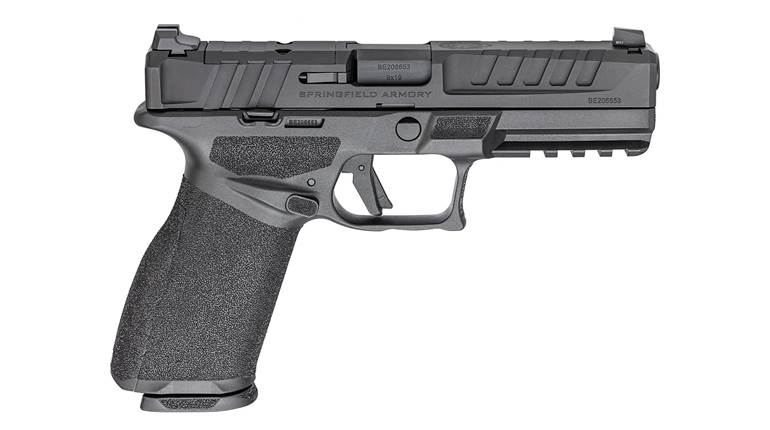
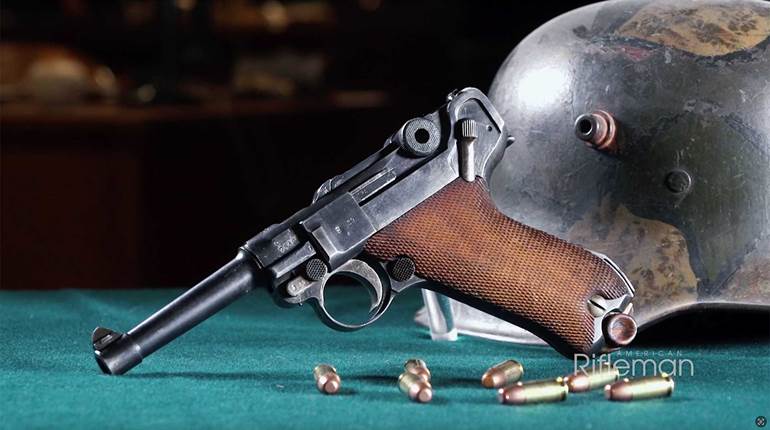




![Auto[47]](/media/121jogez/auto-47.jpg?anchor=center&mode=crop&width=770&height=430&rnd=134090788010670000&quality=60)
![Auto[47]](/media/121jogez/auto-47.jpg?anchor=center&mode=crop&width=150&height=150&rnd=134090788010670000&quality=60)

